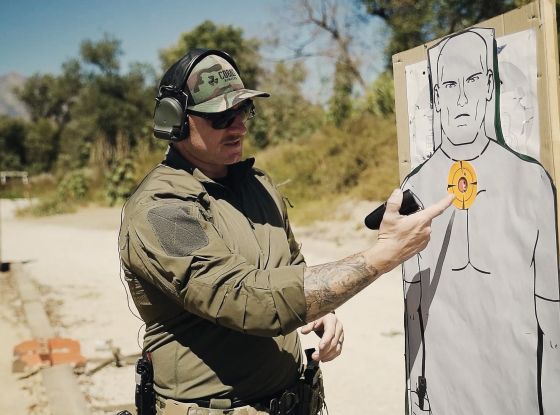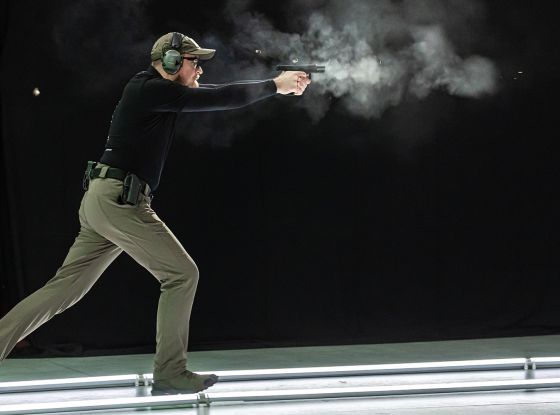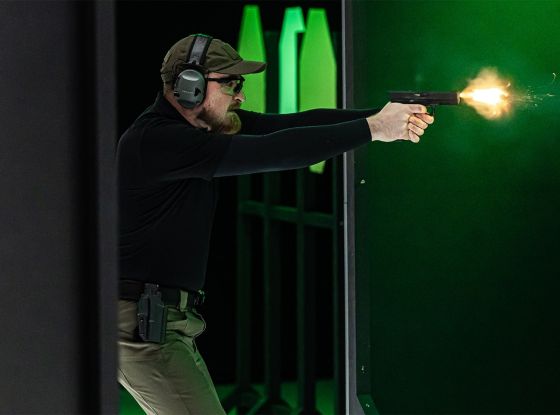The tactical shotgun is one of the most familiar yet misunderstood tools in the modern arsenal. Simple in appearance, it’s often seen as a grab-and-go solution. In reality, running it effectively under stress demands deliberate training, gear awareness, and skill that’s easy to underestimate.
In this blog post:
That was the core message in a recent UF PRO Beer:30 Podcast episode, where Gerry Perez and Brian “BDUB” Wadtke of Triple Feed discussed the technical realities and tactical misconceptions surrounding shotguns. What they shared went far beyond stereotypes, touching on manipulation, patterning, gear setups, home-defense loads, and why understanding tools like the Flux Raider or Sig Rattler matters.
Want the full deep dive? Listen to the episode here.
This article builds on that conversation. Not to repeat it, but to unpack why the tactical shotgun still deserves your respect, and how to run it well.
This Isn’t a Toy or a Crutch. It’s a Tactical Tool You Have to Master
It’s easy to see the shotgun as outdated. Most models still rely on pump-action mechanics, and manually cycling your firearm between every shot seems out of step in a world of red dots and suppressed carbines.
But that manual nature is exactly what makes the tactical shotgun a platform that requires discipline. It’s not forgiving. You have to cycle it. You have to feed it. And if you’re not doing both well every time, you’re just holding dead weight.
Add in safety placements, loading quirks, and patterning variables, and it becomes clear: this isn’t just another long gun. Familiarity with rifles or pistols doesn’t guarantee a smooth transition. The tactical shotgun plays by its own rules.
Why the Pump Action Still Sets the Standard
Semi-automatic shotguns might look modern and run fast, but the pump-action tactical shotgun remains the best platform for building true proficiency.
Why? Because if you can run a pump shotgun well under pressure, everything else becomes easier. Pump actions force you to master the basics: timing, loading rhythm, and recoil control. There’s nowhere to hide bad habits.
That’s why pump actions are still in use by most agencies and protection teams. It’s not just about budget. It’s about reliability, simplicity, and the fact that the platform punishes poor technique, which is exactly what makes it such a valuable teacher.
SUBSCRIBE TO UNLOCK OUR EXCLUSIVE CONTENT
Enter your email and get timely updates and relevant intel on tactical topics directly to your inbox.
You are signing up to receive updates via e-mail from which you can opt out at any time. Visit our privacy policy for more info.
Patterning: Every Tactical Shotgun Tells a Different Story
Here’s a hard truth: even two shotguns from the same production line won’t necessarily pattern the same.
That’s why any good tactical shotgun course includes patterning. It’s not just about where your pellets go. It’s about understanding how your shotgun performs with your ammo at specific distances.
Factors like:
- 8-pellet vs 9-pellet buckshot
- Coated vs uncoated pellets
- Shot velocity (feet per second)
- Choke selection (if available)
…can all dramatically change your spread and point of impact.
If you’re still loading whatever was cheapest at the gun counter without knowing how it performs in your barrel, you’re not training. You’re gambling.

Load Selection Isn’t Just About Power
From slugs to buckshot to exotic blends, there’s no shortage of shotgun loads. But raw power doesn’t guarantee good performance.
Sure, a slug hits hard. But how does it behave in your specific shotgun at typical self-defense distances? What about over-penetration? Spread size? Muzzle rise?
Some rounds sound impressive on paper but fall short in the field. Others — like flight-control buck or well-paired 8-pellet loads — deliver excellent consistency when matched to the right barrel and mission profile.
And then there are the novelty rounds: dragons’ breath, bolo shells, mixed loads. Fun? Sure. Tactical? That depends. If it walks like a gimmick, looks like a gimmick, and patterns like a gimmick, it probably is.
Proficiency Starts With Manipulation
Running a tactical shotgun isn’t just about pulling the trigger. It’s about mastering every movement in between. From cycling rounds under pressure to combat loading on the fly, manipulation is where true proficiency begins.
There’s no relying on high-capacity mags or the forgiving cadence of a red dot. If your rhythm breaks — if you short-stroke the pump, fail to seat a round properly, or miscount your last shell — the shotgun makes you pay for it.
That’s why training isn’t optional. You don’t simply fire a shotgun. You train to handle it with control. Smooth, confident manipulation comes from consistent reps, solving problems under pressure, and building the kind of muscle memory that holds up when it counts.
Want to Get Better? Start With This.
If you’re serious about becoming proficient with a tactical shotgun, skip the casual clay sessions and focus on fundamentals:
- Take a vetted tactical shotgun course. Don’t just sign up for the cheapest option near you.
- Invest in a reliable shotgun. That 200$ no-name model may feel like a win — until it fails during your first reps.
- Pattern your ammo. Don’t assume anything. See how different loads behave in your specific platform.
- Train for manipulation. Practice loading under pressure, clearing malfunctions, and maintaining tempo.
Conclusion
Mastering the tactical shotgun takes more than loading shells and pulling the trigger. It demands a deep understanding of your platform, your loads, and your own limitations. From the way it patterns to the way it feeds, every detail matters — and every mistake costs you time, control, or worse.
This platform won’t cover for bad habits or lack of training. It forces you to slow down, to train deliberately, and to earn your efficiency. And that’s exactly what makes it so effective in the hands of someone who knows how to run it right.
Still want more?







